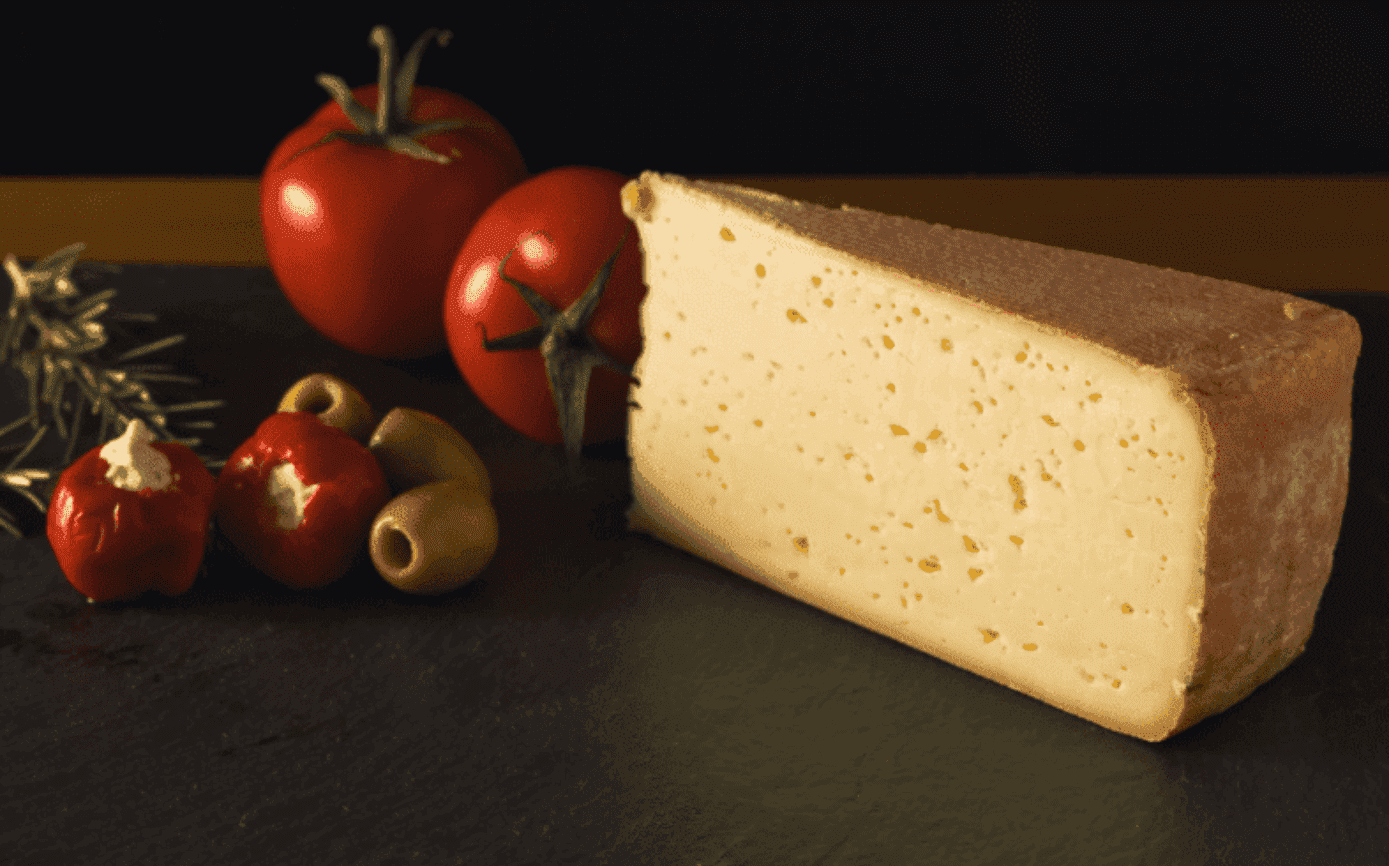By using our website, you agree to the use of cookies as described in our Cookie Policy
What Does German Tilsit Cheese Taste Like

If you're a fan of semi-soft cheeses like Gouda or Havarti, then German Tilsit cheese is a must-try. With a captivating history and flavor profile, it offers something both familiar and intriguingly distinct. Let's explore this delicious German cheese and discover why it deserves a place on your next cheese board.
History of Tilsit Cheese
The story of Tilsit cheese began in the mid-19th century when Swiss immigrants settled in the town of Tilsit, in what was then East Prussia (now Sovetsk, Russia). These settlers longed for the familiar flavors of their homeland's cheeses, particularly Gouda.
However, differences in the local climate and ingredients made replicating Gouda cheese difficult. Their resourcefulness led to the creation of a new and distinct cheese. While slightly different from their original inspiration, Tilsit cheese quickly gained popularity.
As its fame spread, variations of Tilsit began to appear across Europe, with each region adding its own unique touch. Today, Tilsit cheese Germany is celebrated in several European countries, reflecting the influences of local climates, milk sources, and cheese-making traditions.
Production Process
Tilsit cheese production begins with cow's milk, which may be pasteurized or left raw, depending on the desired variety. The milk is then acidified with starter cultures, and rennet is added to form curds. These curds are cut, drained, and pressed into molds.
The next step is the aging process, which lasts at least two months. During this time, the cheese develops its characteristic rind. Tilsit is often aged in a humid environment, contributing to its mildly pungent aroma and slightly granular texture.
It is periodically washed with a brine solution or sometimes beer, promoting the growth of specific bacteria and yeasts contributing to German Tilsit cheese's unique flavor and rind development.
Flavor Profile of Tilsit Cheese
German Tilsit cheese offers a captivating flavor journey that transforms with age. Let's explore its evolution:
Young Tilsit Cheese
Young Tilsit cheese taste boasts a mild, creamy character with a subtle nuttiness reminiscent of Havarti or a young Gouda. Its texture is smooth and supple, yielding easily to the knife. This stage showcases Tilsit's gentle side.
Mature Tilsit
As Tilsit ages, a remarkable transformation occurs. Flavors intensify, developing a tangy, piquant edge with hints of spice and earthiness. The texture becomes slightly granular and firmer, adding complexity to each bite. Mature Tilsit's aroma is strikingly pungent, echoing its time spent aging in humid cellars.
The contrast between young and aged Tilsit extends beyond flavor. With its soft, meltable nature, Young Tilsit excels in grilled dishes and creamy sauces. Aged Tilsit stands as a bold centerpiece on a cheeseboard, its sharpness pairing beautifully with cured meats and full-bodied wines.
Exploring the different stages of Tilsit cheese reveals the dynamic range of flavors that cheese can offer. Each slice tells a story of time and transformation, making Tilsit a fascinating exploration of the art of cheesemaking.
Culinary Uses
Tilsit cheese shines due to its fantastic versatility in the kitchen. Let's look into some of its delicious uses:
Melting
Tilsit melts beautifully, making it a star ingredient in grilled cheese sandwiches, cheese sauces, fondues, and raclettes. Its flavor holds up well to heat, adding depth and richness to any dish.
Salads & Platters
The bold, tangy Tilsit cheese taste adds a vibrant element to salads. It also pairs beautifully with fresh and dried fruits like apples, pears, or figs on a classic cheese platter.
Pairings
The intensity of Tilsit cheese complements slightly sweet flavors – try it with slices of apple or pear. A crisp Riesling, light beer, or even a fruity cider creates delicious pairings for beverages.
Flavored Booster
Crumble Tilsit over roasted vegetables, potatoes, or pasta for a burst of savory flavor that transforms simple dishes.
Soups and Casseroles
Grated or diced Tilsit adds richness and creaminess to soups. Stir it into casseroles and gratins for a cheesy, satisfying layer.
Stuffed Dishes
Tilsit's pliable texture makes it perfect for stuffing. Try it in chicken breasts, mushrooms, or bell peppers for a flavorful twist.
Guide to Buying and Storing Tilsit Cheese
To ensure your Tilsit cheese tastes its best, follow these simple guidelines for selection and storage:
Buying Tilsit Cheese
- Where to Look: Specialty cheese shops offer the most variety, but well-stocked supermarkets may also carry Tilsit. Look for Tilsit cheese Germany imported directly or produced in regions known for high-quality dairy products.
- Signs of Quality: Look for cheese with a smooth, slightly shiny surface and a pale yellow color. It should feel firm but with a slight give when pressed. The aroma should be fresh, creamy, and slightly tangy. Avoid overly hard, crumbly cheese or any with an ammonia-like smell.
Storing Tilsit Cheese
- Ideal Environment: Store Tilsit in your refrigerator's cheese drawer (or similar area) at around 4°C (39°F). This provides a cool, slightly humid environment.
- Best Wrapping: Wrap Tilsit in parchment or wax paper, then loosely in plastic wrap or aluminum foil. This allows the cheese to breathe while preventing drying and absorption of fridge odors.
- Minimize Air Exposure: Re-wrap the cheese tightly after each use to limit oxidation, which can affect flavor and texture.
- Enjoy While Fresh: Fresh Tilsit typically keeps for several weeks. Once opened, try to consume it within 10 days for optimal flavor.
Extra Tip: If the rind seems overly dry, lightly moisten it with a damp cloth to prevent cracking.
Nutritional Information
German Tilsit cheese is a source of protein, calcium, and other essential nutrients. A typical serving (approximately 1 ounce) offers:
- Calories: 100-120
- Fat: 7-9 grams
- Protein: 7 grams
- Calcium: 20% of the recommended daily intake.
Please note that these values can vary based on the specific brand or variety.
Final Thoughts: What Does German Tilsit Cheese Taste Like?
Tilsit cheese offers a unique and delicious journey into the world of European cheesemaking. Whether you're a cheese enthusiast or simply curious, German Tilsit cheese is a delightful surprise waiting to be discovered. Visit your trusted physical or online cheese shop and search for Tilsit – your tastebuds will thank you!
‹ Back







